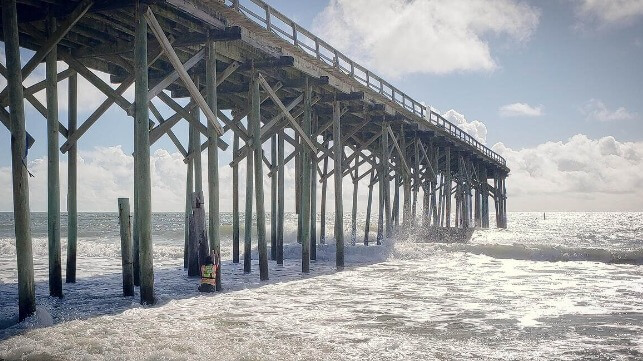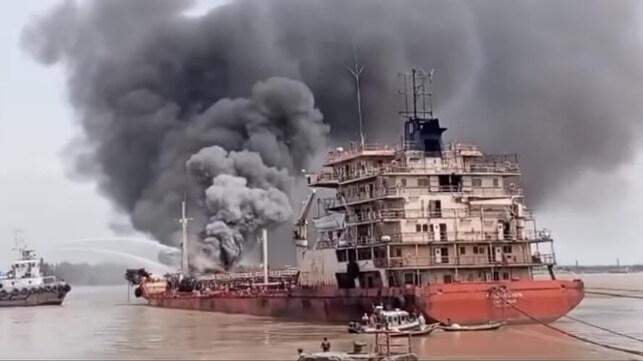WWIII
Malaysia Expands Oil and Gas Drilling in Disputed South China Sea
Despite Chinese pressure, Malaysia has stepped up oil and gas exploration activities in the disputed South China Sea, even as the China Coast Guard has constantly pressured Malaysian oil and gas operations this year, a new report by Washington-based Asia Maritime Transparency Initiative showed.
The long-running dispute in the South China Sea involves territorial claims by China as well as Vietnam, the Philippines, Taiwan, Brunei, and Malaysia. China has territorial claims to about 90% of the South China Sea, which has put it at odds with its neighbors.
Territorial disputes in the South China Sea erupted after Beijing laid a sweeping claim to sovereignty over the sea—home to an estimated 11 billion barrels of untapped oil. Disputes over the South China Sea date back to the 1970s when countries began to claim various zones and islands in the sea, such as the Spratly Islands, which possess rich natural resources and fishing areas.
Automatic Identification System data shows that the China Coast Guard (CCG) has operated in Malaysian-claimed waters “like clockwork” so far this year, the report found. Asia Maritime Transparency Initiative (AMTI) found that between January 1 and September 30 nine different CCG vessels that spent time patrolling in Malaysia’s exclusive economic zone (EEZ) and continental shelf.
China’s ships on patrol in Malaysia’s EEZ spent most of their time near Luconia Shoals, a group of mostly submerged reefs 80 nautical miles northwest of Sarawak, AMTI said.
“Despite the CCG’s efforts, Malaysia has not only continued its existing oil and gas production but also expanded exploratory activity,” the report reads.
China’s continuous presence in Malaysia’s zone is a fraction of the number of ships it has deployed farther north in the Spratly Islands to monitor and contest Philippine activities in disputed waters, according to AMTI.
“However, with Malaysia’s expanding drilling and a potential reduction in China-Philippine tensions, Beijing could ratchet up the pressure on Malaysian hydrocarbon production,” the think tank said.
By Tsvetana Paraskova for Oilprice.com
Chinese Missile Boats Use Laser to Harass Philippine Patrol Plane

A Chinese PLA Navy missile boat repeatedly used a high-intensity laser to harass a Philippine patrol plane last week, according to Manila's Bureau of Fisheries and Aquatic Resources (BFAR). Laser illumination can impair or damage pilots' eyesight, potentially putting the aircraft at risk, and it is illegal in many nations.
On Friday, a BFAR patrol plane was operating in the Philippine exclusive economic zone near Half Moon Shoal, about 60 nautical miles off the coast of Palawan. It was accompanying two BFAR surface ships, the BRP Romapenet and the BRP Taradipit, which were under way on a mission to deliver supplies to fishermen at the reef. The shoal is closer to the Philippine home islands than most of the contested features in the Spratly archipelago, and has not historically seen high levels of Chinese military activity.
According to Philippine outlet ABS-CBN (which had a reporter aboard BRP Romapenet), two Hubei-class Type 22 guided missile boats began following the BFAR fishery ships as they transited to Half Moon Shoal. As the PLA Navy vessels tailed the Philippine ships, they illuminated the BFAR patrol plane with a high-intensity laser.
Chinese government vessels have previously used targeting lasers to harass the Philippine Coast Guard, but this event involved an aircraft and saw repeated use of the laser device. After the BFAR aircraft challenged the Chinese missile boats and asked them to stop, one of the boats used the laser twice more, at intervals of about five minutes.
The pilots reported "high intensity white light" resulting in eye discomfort. Targeting lasers are typically in the green, red or infrared parts of the spectrum.
The Type 22 is a high-speed missile boat operated by the PLA Navy, armed with eight antiship cruise missiles and capable of making 42 knots (reduced to 20 knots in higher sea states). It has not been seen before in the Philippine EEZ, security analyst Dr. Chester Cabalza told ABS CBN. "This is alarming because it was a missile ship that shadowed our civilian vessel. We all know that if a grey ship [naval vessel] was used, it was meant to intimidate us," he said.
On Saturday, later in the mission, a Chinese military helicopter closely shadowed BRP Romapenet near Sabina Shoal, flying within 20 meters of the vessel. The BFAR vessels completed their transit and delivered food, fuel and medications to about 100 fishermen near Half Moon Shoal.








